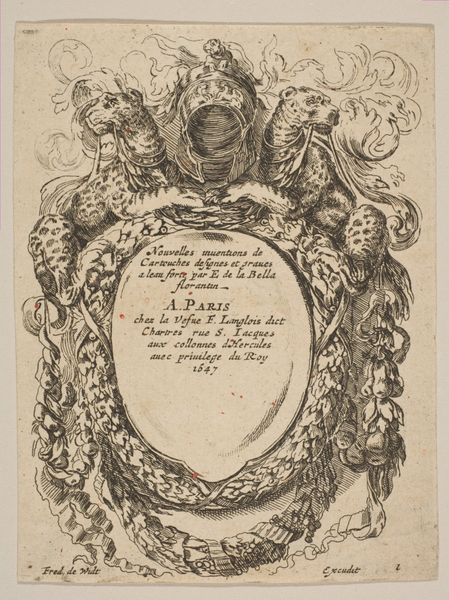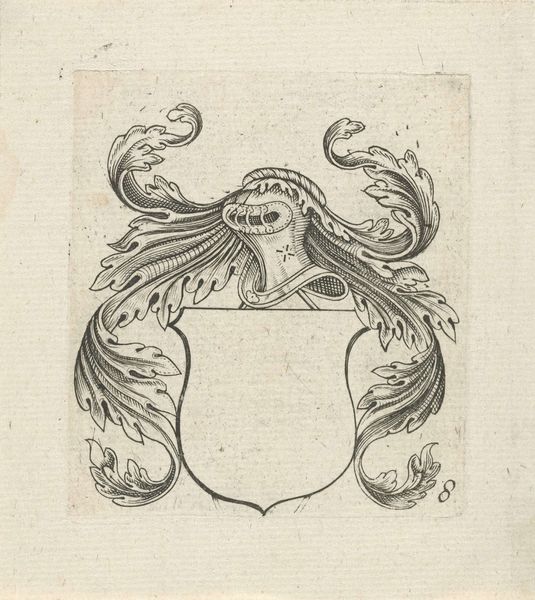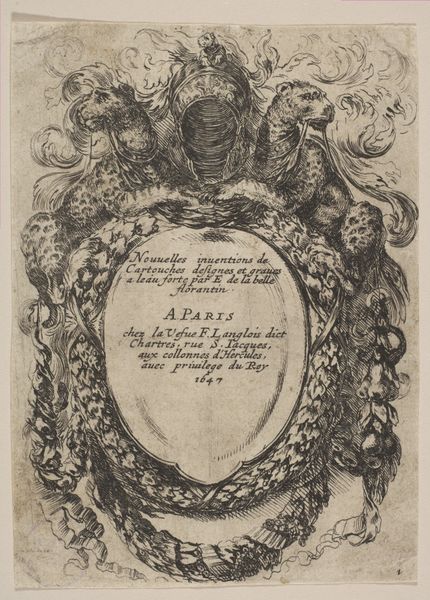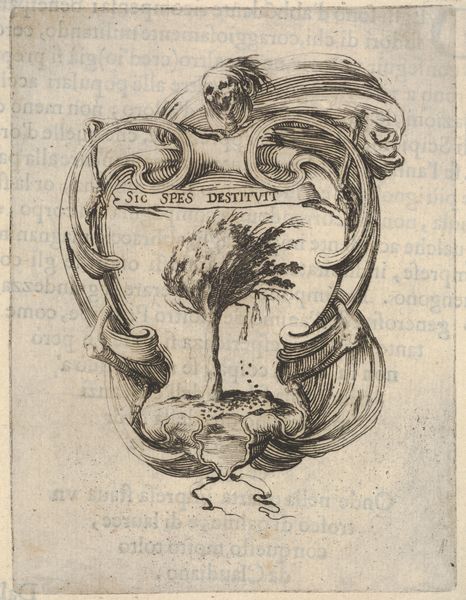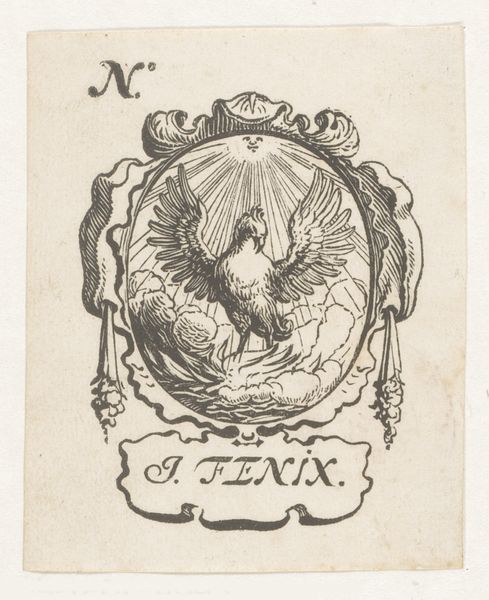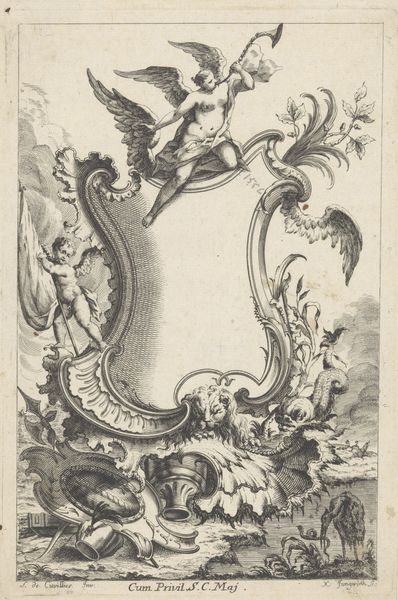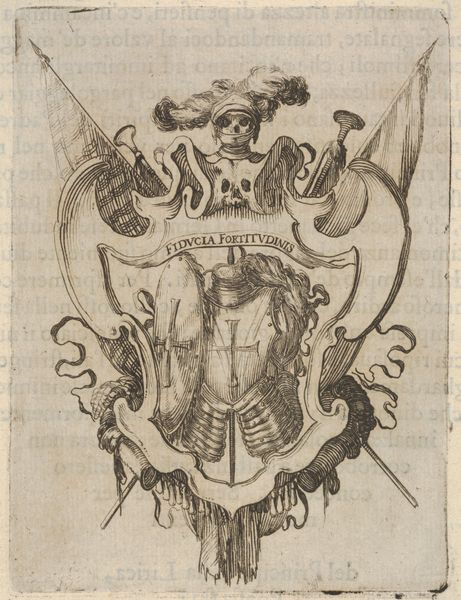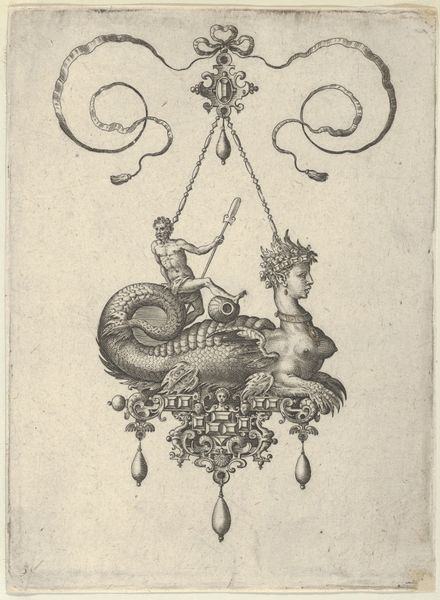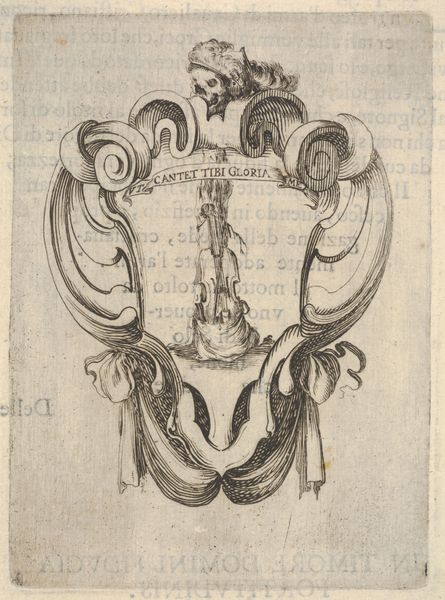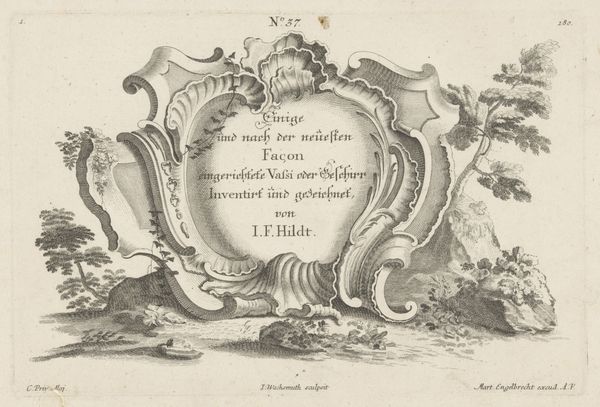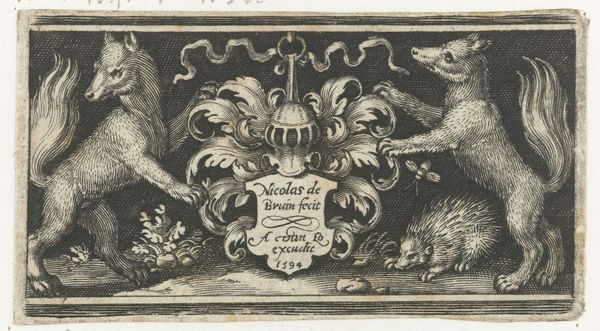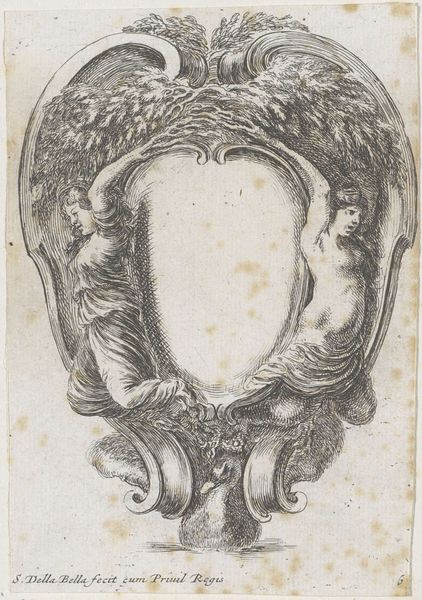
graphic-art, print, engraving
#
graphic-art
#
baroque
# print
#
old engraving style
#
line
#
engraving
Dimensions: plate: 11.3 x 8.6 cm (4 7/16 x 3 3/8 in.) sheet: 17.4 x 12.2 cm (6 7/8 x 4 13/16 in.)
Copyright: National Gallery of Art: CC0 1.0
Carlo Antonio Buffagnotti created this frontispiece engraving sometime between 1660 and 1710. It encapsulates the spirit of the Baroque era in Italy, a period marked by dramatic and ornate aesthetics. The title, "Vári Capricci di Fughe," hints at the playful and imaginative nature of the fugues contained within. The visual codes here are striking. Hybrid creatures flank the central text, their forms blending human, angelic, and serpentine elements. This reflects the Baroque fascination with metamorphosis and the blurring of boundaries. The elaborate ornamentation, with swirling foliage and grotesque masks, speaks to the period's taste for complexity and grandeur. Italy at this time was characterized by fragmented political states and a powerful Catholic Church. The art of the era often served as a tool for asserting power and status. In particular, the frontispiece could serve as a signifier of the quality of the music inside the book, and the status of its composer. To fully understand Buffagnotti's work, we can consult period documents, musical scores, and art historical texts. These sources shed light on the social and institutional contexts that shaped its creation and meaning.
Comments
No comments
Be the first to comment and join the conversation on the ultimate creative platform.
